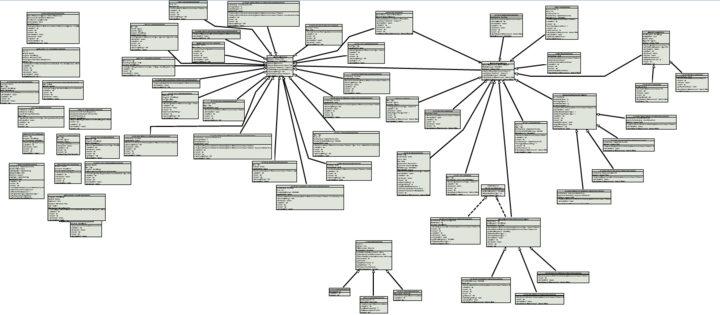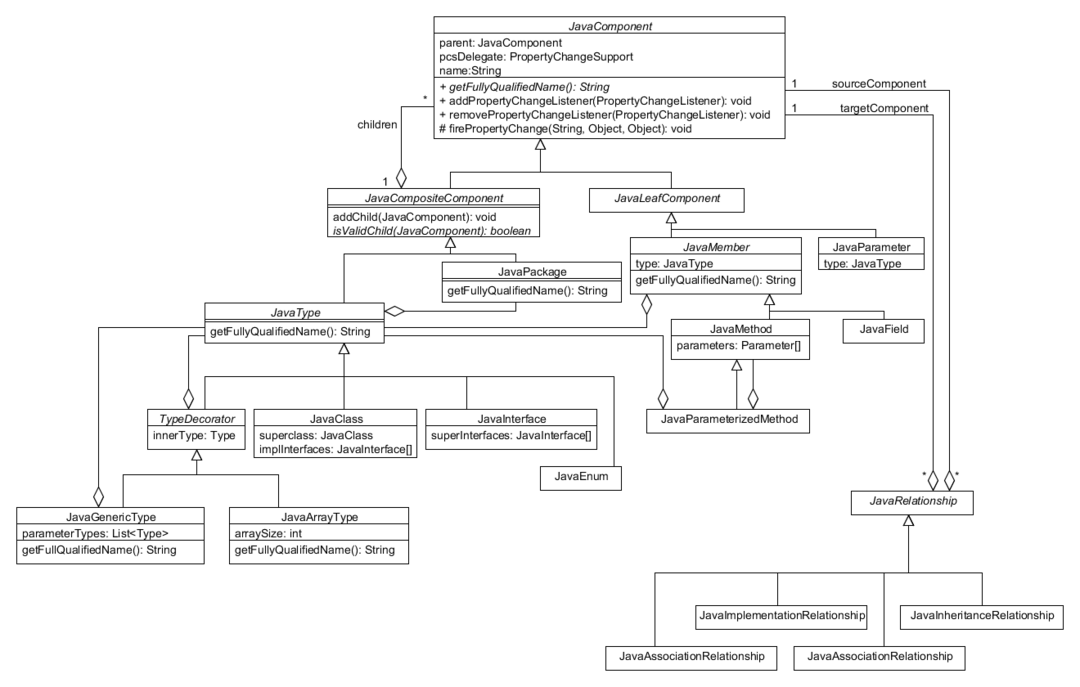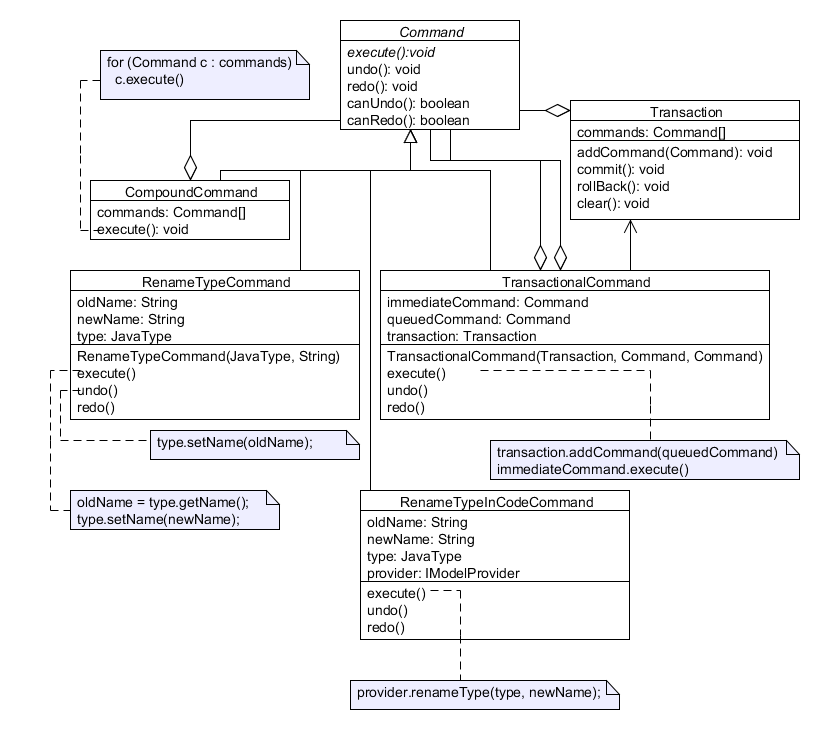Martin Doms' Design Study
Contents |
Martin Doms' Design Study
The problem
This design study is based on a project that my team in the COSC325 Group Project full-year class built. The full system is a round-trip engineering tool that allows users to generate and modify UML diagrams from existing code, and push modifications through to the code. The program exists as a plugin for Eclipse written in Java.
The aspect of the project I am working on redesigning is the model and command infrastructure. The existing system is a transactional system, which means that the user makes arbitrary modifications to the UML representation and at any time can commit those modifications to the code as a single unit of work. Transactions are summarized for the user before committing.
There are two main problems with the existing system that I wish to solve. The first is in the model. The model is essentially a simplified representation of the code which is derived from a much more complex abstract syntax tree, provided by the Eclipse platform. The main problem with the current model is that due to poor design decisions early in the project (to be discussed later), modifications and extensions to the model are difficult. Many changes to the model result in bugs that would not exist in a more robust system.
The second issue is the command system. In the current system, UI actions result in the generation of Command objects which act on the model and the underlying code. For example, if the user renames a class on the UML diagram, the rename action afforded by the UI generates a rename Command object which is executed. There are no dependencies between the UI actions and the model, as the command infrastructure acts as an insulating layer between them. Commands can also be generated by events that occur on the file system, such as a file system listener creating a remove type Command object when the user deletes a source file.
Because of the transactional nature of the program, actions that occur on the UI currently generate two commands: a command that changes the UI (called a CommittableCommand) and the command to push that change into the code (called a CommitCommand). The CommittableCommand object is in charge of creating its own CommitCommand. This system worked well early in the project but as the program grew it has resulting in an explosion of CommittableCommand and CommitCommand subtypes which have become difficult to manage and often duplicate code.
The Redesign
The following are two UML diagrams showing the redesign of the system, followed by an explanation of them.


